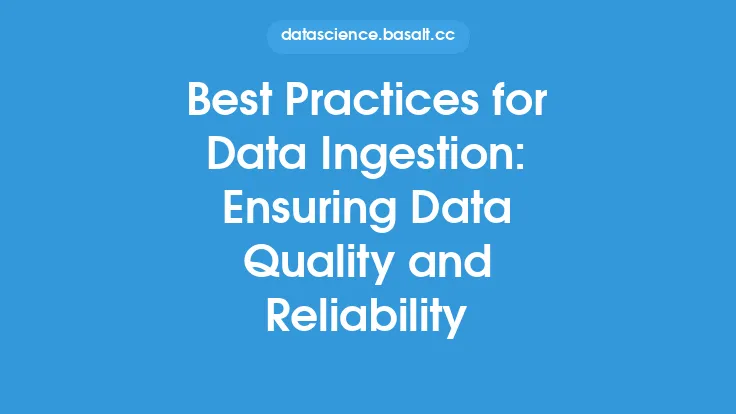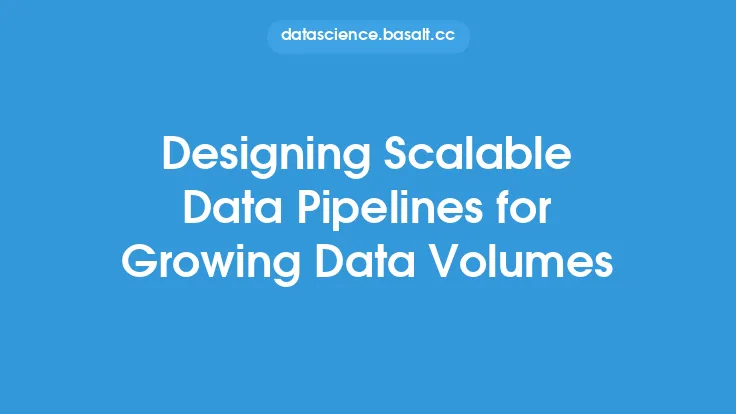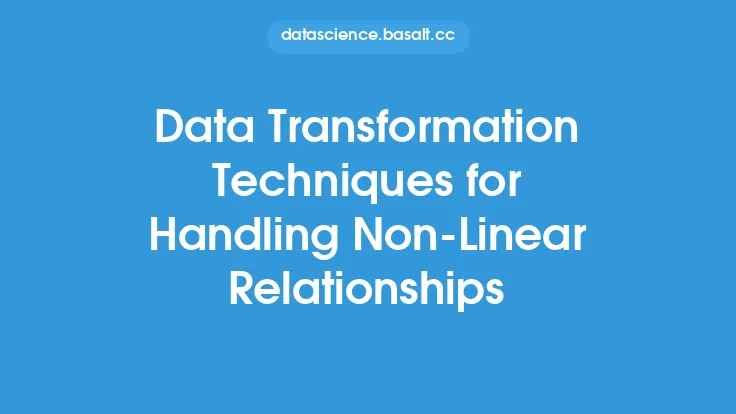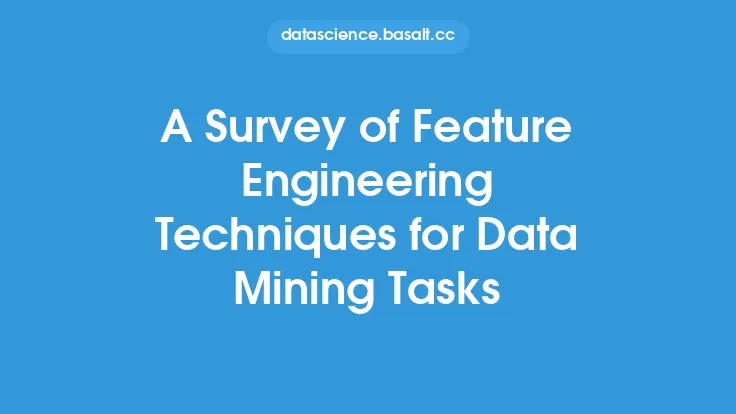Handling large volumes of data is a critical challenge in the field of data engineering. As the amount of data being generated continues to grow exponentially, organizations are faced with the daunting task of ingesting, processing, and analyzing this data in a timely and efficient manner. Data ingestion techniques play a crucial role in this process, as they enable organizations to collect, transform, and load data into their systems for further analysis and decision-making. In this article, we will delve into the various data ingestion techniques that can be used to handle large volumes of data, and explore the benefits and challenges associated with each approach.
Introduction to Data Ingestion Techniques
Data ingestion techniques refer to the methods and tools used to collect, transform, and load data into a system for analysis and decision-making. These techniques can be broadly categorized into two main types: batch processing and real-time processing. Batch processing involves collecting data in batches and processing it in bulk, whereas real-time processing involves processing data as it is generated. The choice of data ingestion technique depends on the type and volume of data, as well as the requirements of the organization.
Batch Processing Techniques
Batch processing is a traditional approach to data ingestion, where data is collected in batches and processed in bulk. This approach is suitable for handling large volumes of data that are generated periodically, such as log files or transactional data. Batch processing techniques include:
- Extract, Transform, Load (ETL): ETL is a popular batch processing technique that involves extracting data from multiple sources, transforming it into a standardized format, and loading it into a target system.
- Data Warehousing: Data warehousing involves storing data in a centralized repository, where it can be accessed and analyzed by various stakeholders.
- Batch Processing Frameworks: Batch processing frameworks, such as Apache Beam and Apache Spark, provide a scalable and efficient way to process large volumes of data in batch mode.
Real-Time Processing Techniques
Real-time processing involves processing data as it is generated, and is suitable for handling high-velocity data streams, such as sensor data or social media feeds. Real-time processing techniques include:
- Stream Processing: Stream processing involves processing data in real-time, as it is generated, using frameworks such as Apache Kafka, Apache Storm, or Apache Flink.
- Event-Driven Architecture: Event-driven architecture involves designing systems that can respond to events in real-time, using frameworks such as Apache Kafka or Amazon Kinesis.
- In-Memory Computing: In-memory computing involves processing data in real-time, using in-memory data grids such as Apache Ignite or Hazelcast.
Distributed Data Ingestion Techniques
Distributed data ingestion techniques involve using multiple nodes or clusters to ingest and process large volumes of data. These techniques are suitable for handling massive amounts of data that cannot be processed by a single node or cluster. Distributed data ingestion techniques include:
- Distributed File Systems: Distributed file systems, such as Hadoop Distributed File System (HDFS) or Amazon S3, provide a scalable and fault-tolerant way to store and process large volumes of data.
- Distributed Processing Frameworks: Distributed processing frameworks, such as Apache Hadoop or Apache Spark, provide a scalable and efficient way to process large volumes of data in parallel.
- Cloud-Based Data Ingestion: Cloud-based data ingestion involves using cloud-based services, such as Amazon Kinesis or Google Cloud Pub/Sub, to ingest and process large volumes of data in a scalable and efficient manner.
Data Ingestion Tools and Technologies
There are various data ingestion tools and technologies available, each with its own strengths and weaknesses. Some popular data ingestion tools and technologies include:
- Apache NiFi: Apache NiFi is an open-source data ingestion tool that provides a scalable and flexible way to collect, transform, and load data.
- Apache Kafka: Apache Kafka is a popular open-source messaging system that provides a scalable and fault-tolerant way to ingest and process large volumes of data.
- Amazon Kinesis: Amazon Kinesis is a cloud-based data ingestion service that provides a scalable and efficient way to collect, process, and analyze large volumes of data.
Best Practices for Data Ingestion
To ensure efficient and effective data ingestion, it is essential to follow best practices, such as:
- Data Quality: Ensuring data quality is critical to effective data ingestion, as poor data quality can lead to inaccurate analysis and decision-making.
- Data Standardization: Standardizing data formats and structures is essential to ensure seamless integration and analysis of data from multiple sources.
- Scalability: Ensuring scalability is critical to handling large volumes of data, as well as to accommodate growing data volumes and velocities.
- Security: Ensuring data security is critical to protect sensitive data from unauthorized access or breaches.
Conclusion
Data ingestion techniques play a critical role in handling large volumes of data, and the choice of technique depends on the type and volume of data, as well as the requirements of the organization. By understanding the various data ingestion techniques, tools, and technologies available, organizations can design and implement efficient and effective data ingestion systems that meet their needs and enable them to make data-driven decisions. Whether it is batch processing, real-time processing, or distributed data ingestion, the key to successful data ingestion is to ensure data quality, standardization, scalability, and security.





